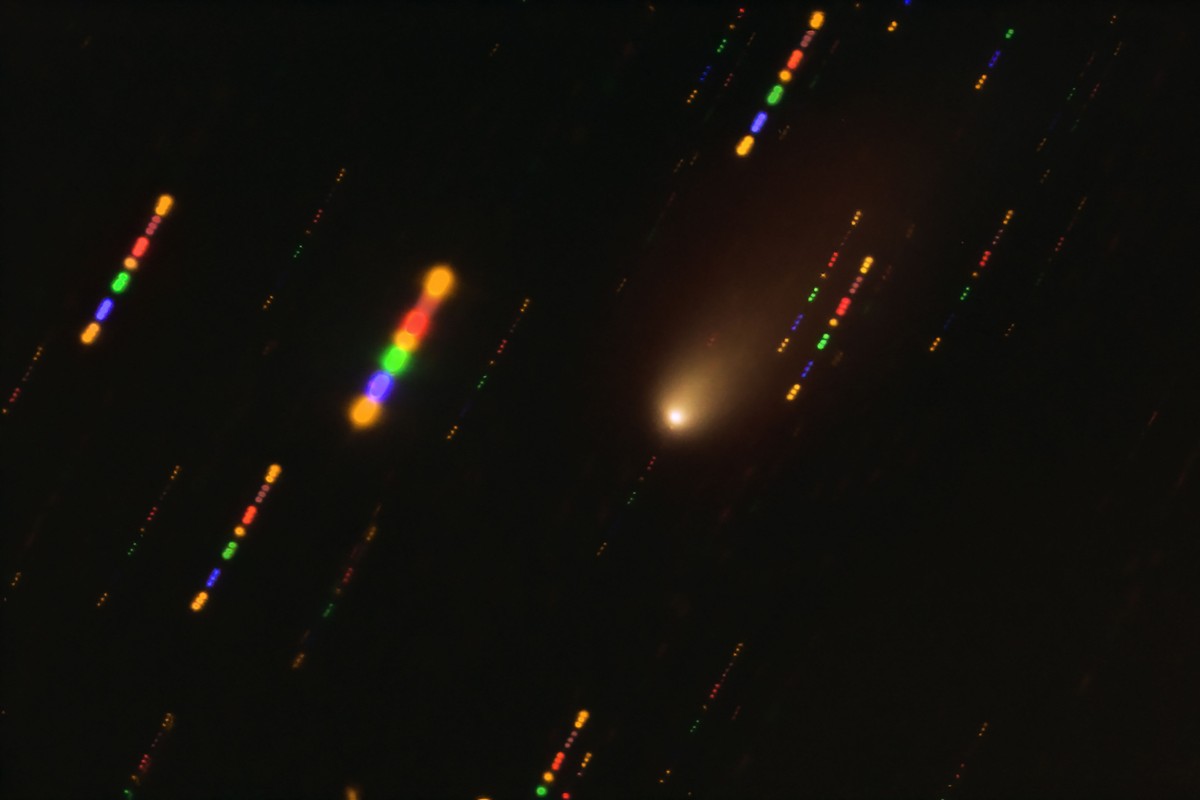
Newly-discovered comet 'most pristine' object from outer space seen in Solar System
- In astronomical terms, ‘pristine’ describes a comet that has never passed close enough to a star to be transformed by its heat
- The last similar comet was Hale-Bopp, discovered by amateur astronomers in 1995
 This handout image from the European Southern Observatory shows the comet 2I/Borisov passing near the sun, taken with the FORS2 instrument on ESO's Very Large Telescope in late 2019. Since the comet was travelling at breakneck speed, the background stars appeared as streaks of light as the telescope followed the comet's trajectory. Photo: AFP
This handout image from the European Southern Observatory shows the comet 2I/Borisov passing near the sun, taken with the FORS2 instrument on ESO's Very Large Telescope in late 2019. Since the comet was travelling at breakneck speed, the background stars appeared as streaks of light as the telescope followed the comet's trajectory. Photo: AFPA newly observed interstellar comet is the most pristine visitor from outer space ever seen in our Solar System, according to a pair of studies released Tuesday detailing its unique characteristics.
Pristine, in astronomical terms, describes a comet that has never passed close enough to a star to be transformed by its searing heat.
2I/Borisov was discovered in 2019 by Ukrainian astrophysicist Gennady Borisov at the MARGO Observatory in Crimea and is only the second interstellar object detected in our planetary system.
What are the greatest scientific advancements?
The first - the asteroid known as Oumaumua, which roughly means “Scout” in the Hawaiian language - baffled scientists for its unprecedented properties.
Both objects had trajectories unbound by the Sun, suggesting they came our way through the emptiness of deep space from another Solar System.
Writing in the journal Nature Communications, an international team describe how 2I/Borisov’s coma - the nebulous envelope around the nucleus of a comet - polarised light at a higher rate than typical comets.
A handout photo made available by the European Southern Observatory (ESO) shows an artist's impression of what the surface of the 2I/Borisov comet might look like. Photo: EPA
This is evidence that the comet probably didn’t pass very close to its own star before embarking on its interstellar voyage.
The heat from a star can evaporate a comet’s ice particles, liberating dust particles.
Lighter particles form the comet’s tail while heavier ones fall back on to its surface, building a crust.
That time a car-sized asteroid flew near Earth and scientists didn’t know
Observing the tail of a comet can help scientists see how pristine - or intact - it is.
Co-author Lioudmila Kolokolova from the University of Maryland’s Department of Astronomy in the US explained the findings with reference to the coma, the cloud of gases and particles enveloping the comet core.
What’s the full moon called at different times of the year?
“Since we have observed a very homogeneous coma, without any signs of jets and other features, we suppose that the comet does not have a crust,” she said.
“Thus it is really a pristine object, not affected much by radiation and charged particles.”
The researchers said that only one other comet - Hale-Bopp, discovered by amateur astronomers in 1995 - had exhibited similarly polarised light.